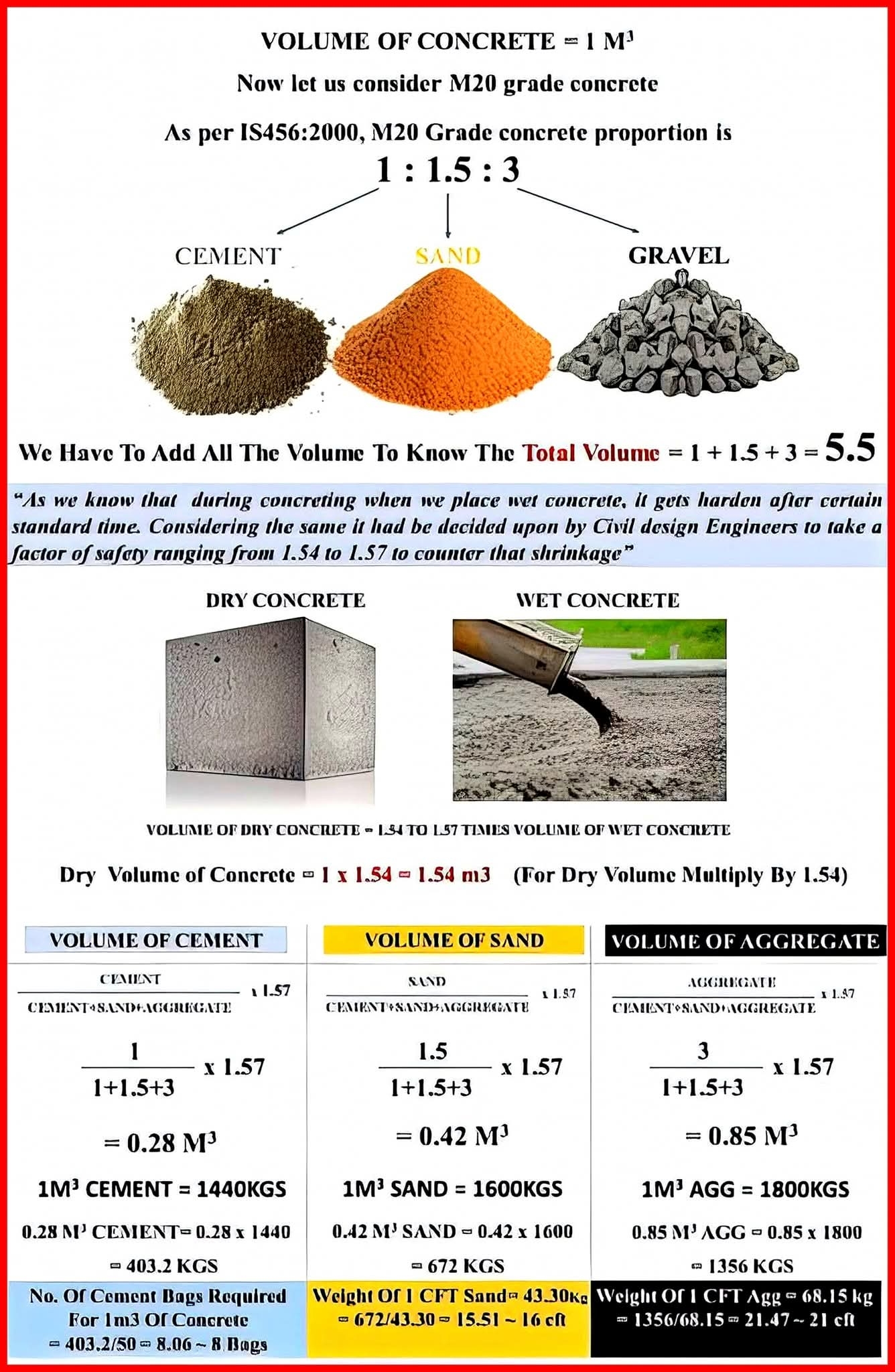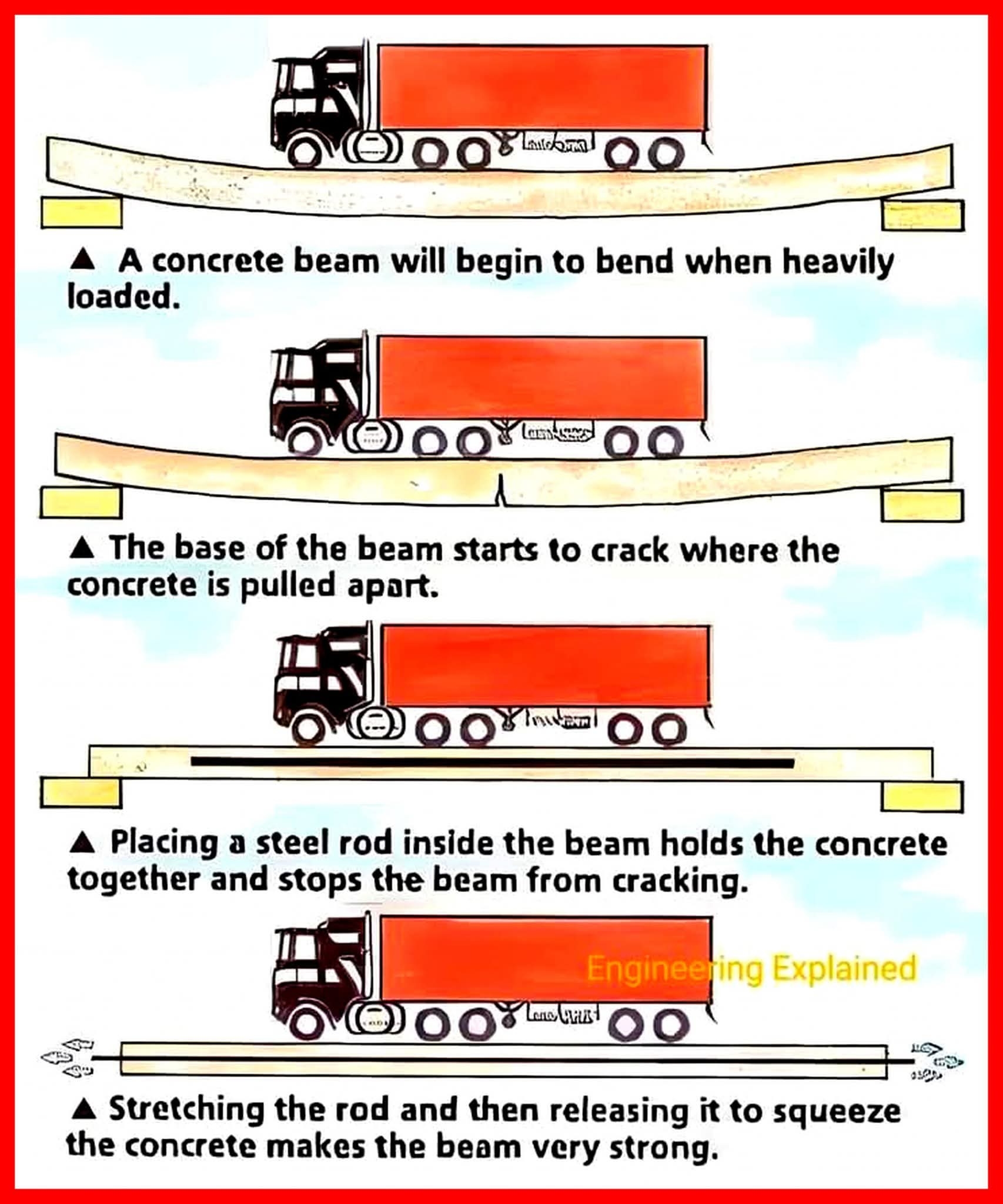This infographic explains how to calculate the exact amounts of cement, sand, and gravel needed for M20 grade concrete.
The process starts with the standard M20 mix proportion of 1:1.5:3 (1 part cement, 1.5 parts sand, and 3 parts gravel). A crucial step often overlooked is accounting for the shrinkage that occurs when wet concrete hardens. To compensate for this volume loss, civil engineers apply a safety factor (typically 1.54 to 1.57) to the desired wet volume to determine the required dry volume of materials.
Following the calculations in the image to get 1 cubic meter of finished concrete, you would need:
Cement: 0.28 m³, or approximately 8 bags.
Sand: 0.42 m³, or about 16 cubic feet.
Aggregate (Gravel): 0.85 m³, or about 21 cubic feet.
This is a fantastic reference for getting your mix proportions right every time!
#CivilEngineering #Construction #ConcreteMix #BuildingTips #DIYProjects #Engineering #M20Concrete #ConstructionMath #BuildingMaterials
The process starts with the standard M20 mix proportion of 1:1.5:3 (1 part cement, 1.5 parts sand, and 3 parts gravel). A crucial step often overlooked is accounting for the shrinkage that occurs when wet concrete hardens. To compensate for this volume loss, civil engineers apply a safety factor (typically 1.54 to 1.57) to the desired wet volume to determine the required dry volume of materials.
Following the calculations in the image to get 1 cubic meter of finished concrete, you would need:
Cement: 0.28 m³, or approximately 8 bags.
Sand: 0.42 m³, or about 16 cubic feet.
Aggregate (Gravel): 0.85 m³, or about 21 cubic feet.
This is a fantastic reference for getting your mix proportions right every time!
#CivilEngineering #Construction #ConcreteMix #BuildingTips #DIYProjects #Engineering #M20Concrete #ConstructionMath #BuildingMaterials
This infographic explains how to calculate the exact amounts of cement, sand, and gravel needed for M20 grade concrete.
The process starts with the standard M20 mix proportion of 1:1.5:3 (1 part cement, 1.5 parts sand, and 3 parts gravel). A crucial step often overlooked is accounting for the shrinkage that occurs when wet concrete hardens. To compensate for this volume loss, civil engineers apply a safety factor (typically 1.54 to 1.57) to the desired wet volume to determine the required dry volume of materials.
Following the calculations in the image to get 1 cubic meter of finished concrete, you would need:
Cement: 0.28 m³, or approximately 8 bags.
Sand: 0.42 m³, or about 16 cubic feet.
Aggregate (Gravel): 0.85 m³, or about 21 cubic feet.
This is a fantastic reference for getting your mix proportions right every time!
#CivilEngineering #Construction #ConcreteMix #BuildingTips #DIYProjects #Engineering #M20Concrete #ConstructionMath #BuildingMaterials
0 Comments
0 Shares
1671 Views



